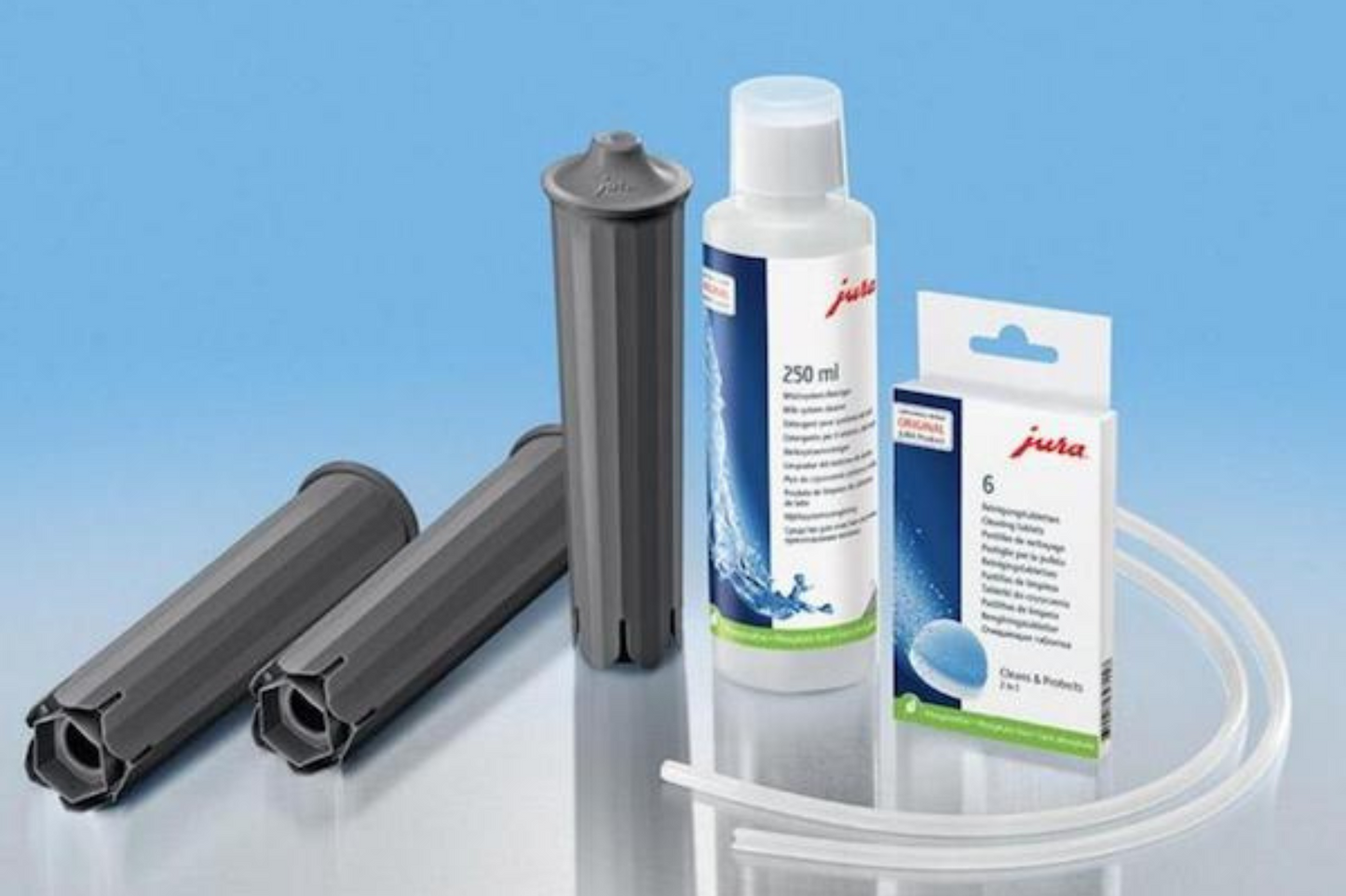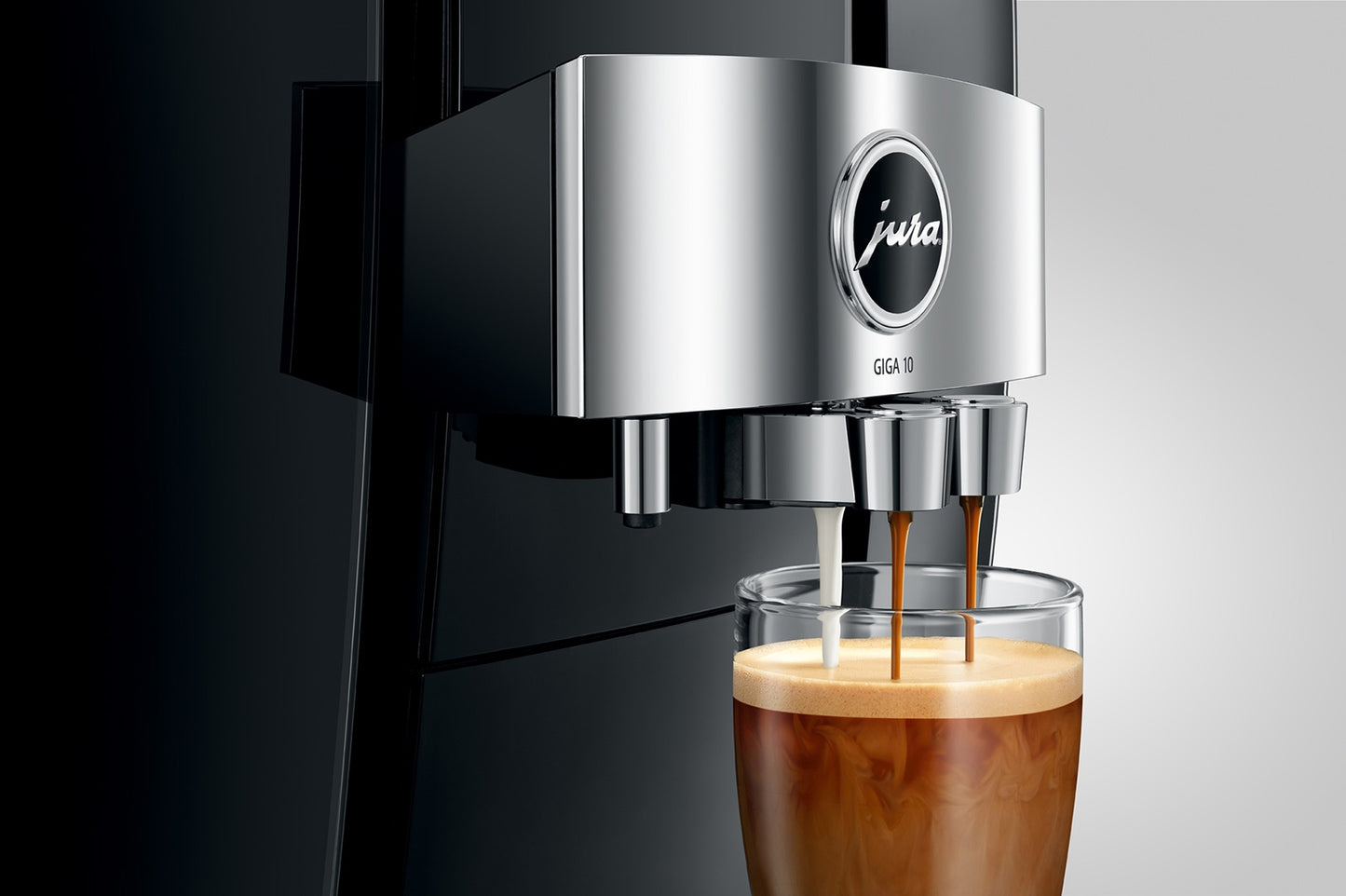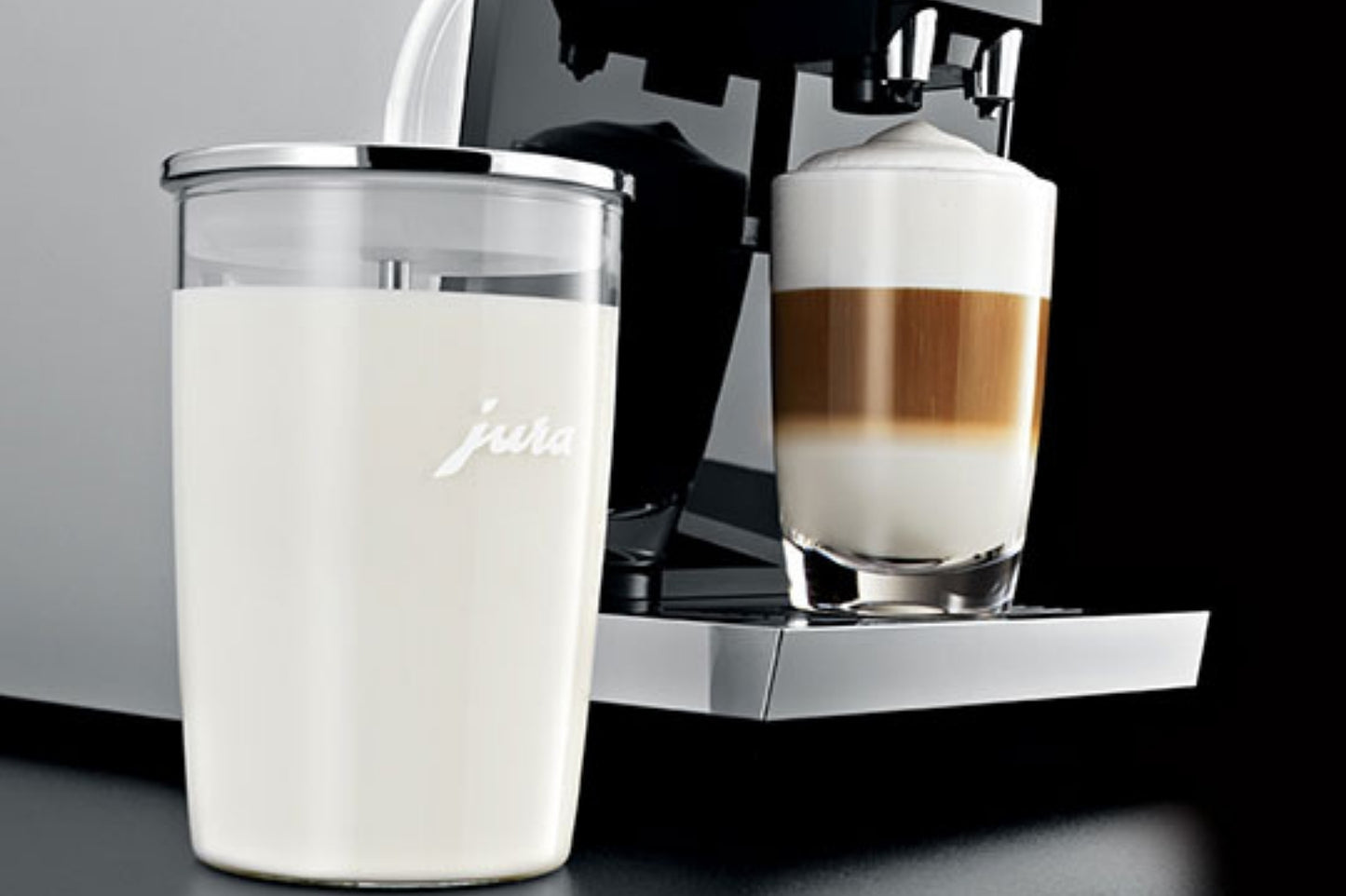
The key to a long and healthy life for your Jura coffee machine is regular maintenance – if set up correctly your Jura coffee machine should be asking you for filters or descale cycles at the correct intervals.
I have lost count of how many machines are running at the factory default of 16 degrees water hardness (the Swiss default intended for softer water areas) when clearly, judging by the chalky deposits all over the water tank alone, the water being used is much harder, more likely 24 to 28 degrees hardness!
Setting the water hardness to the correct level is vital if the machine is to prompt for filters and/or descaling at the correct intervals, because if it does not receive adequate filtration or descaling the system will become slowly strangled and restricted, less efficient at water heating and eventually block completely.
Far better, I would suggest, to be carrying out a few more descales each year or replacing a few more filters, than needing to have the machine stripped down to remove the calcium deposits or replace the blocked components.
Use the correct products
We only recommend and use in our servicing and maintenance schedules, the Jura 2-phase descale tablets. They have been designed to effectively remove limescale while not damaging the linings of the thermoblocs, as some stronger products can – subsequently leaving a metallic taste to the drinks produced. Other products have also been seen to block the system if they were not designed to be pumped through a high-pressure system through small valves and passages.
Coffee clean at least monthly
The coffee clean cycle is designed to clean out coffee residues and deposits from the coffee system - the brewing chamber all the way through to the coffee outlets. The system is usually set up to request a clean cycle every 220 cups and at that point “clean machine” will usually be displayed. However, this cleaning frequency was originally conceived out of the commercial units which could be producing 100 cups a day, so the clean cycle would be coming up at least once a week. When used in a domestic setting where less than 200 cups a month (that is less than 6 cups a day) is common, the clean cycle may only be requested at intervals of 2 months or more apart, and that is too long really. We would recommend carrying out a clean cycle manually using Jura 3-phase cleaning tablets at least once every month to prevent build-up of stale residue, which not only can block the coffee outlets, but as you can imagine, will also taint the flavour of your coffee!
Practice good machine hygiene
It’s very easy with these machine to simply fill the water tank and empty the tray, when requested, and just repeat that over and over, but a lot of small problems can be prevented by taking a few extra moments to wash out the water tank thoroughly once a week with hot water, just as you may your water jug. After all, you wouldn’t keep filling the same glass of water over and over without cleaning it from time to time would you?
The water tank can develop a slimy residue if not cleaned out from time to time and that can then be drawn into the machine where it can stop the flow meter from spinning, causing the machine to believe that water flow has stopped and repeatedly request either “open tap” “close tap” “press rotary” or “press rinse” in an attempt to get water flowing.
Prevent this by cleaning the water tank thoroughly at least once a month.
Drip tray cleaning
The drip tray will also benefit from a thorough clean once a week, as simply pouring out the excess water will leave a coffee film in the tray and that film can conduct the small current from the left tray contact to the right tray contact, which tells the machine the tray is full. “Empty tray” messages when the tray is empty are often caused by damp coffee residue creating a circuit between the two tray contacts, so cleaning the tray properly, especially all around the contacts, will help avoid this issue.
Also keep the area under and behind the tray clear of coffee waste, as it will prevent the tray properly seating in its correct position.
Milk frother hygiene
Among the most common issues for lovers of cappuccino and other milky drinks are cold milk or flat milk, both of which can be caused by simply failing to properly clean the frother after each and every use. Remember, the frother gets hot - it has steam passing through it, and then milk passing through small passages, so it’s not hard to see why a little milk left in the frother will quickly turn to butter and stop the flow of milk or air.
The milk frother is made up of 4 parts: the main body, into which a spindle with the dial control on the front fits, an air nozzle, usually fitted into a “chimney” type upright and the lower chrome outlet, which the frothed milk comes out of.
See the FAQ section where there is a video on cleaning the fine foam frother and some pictures of milk frother’s in their component parts.


